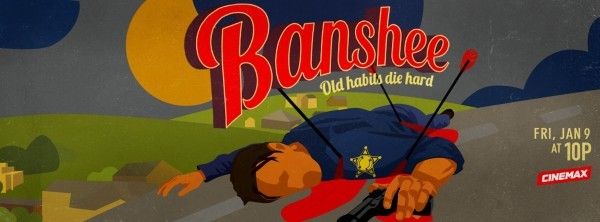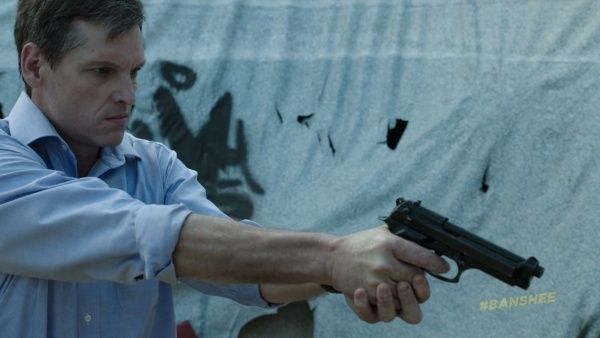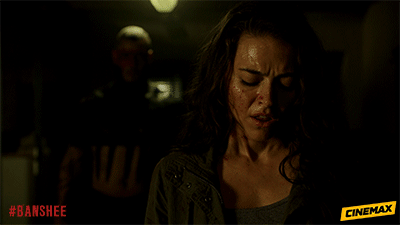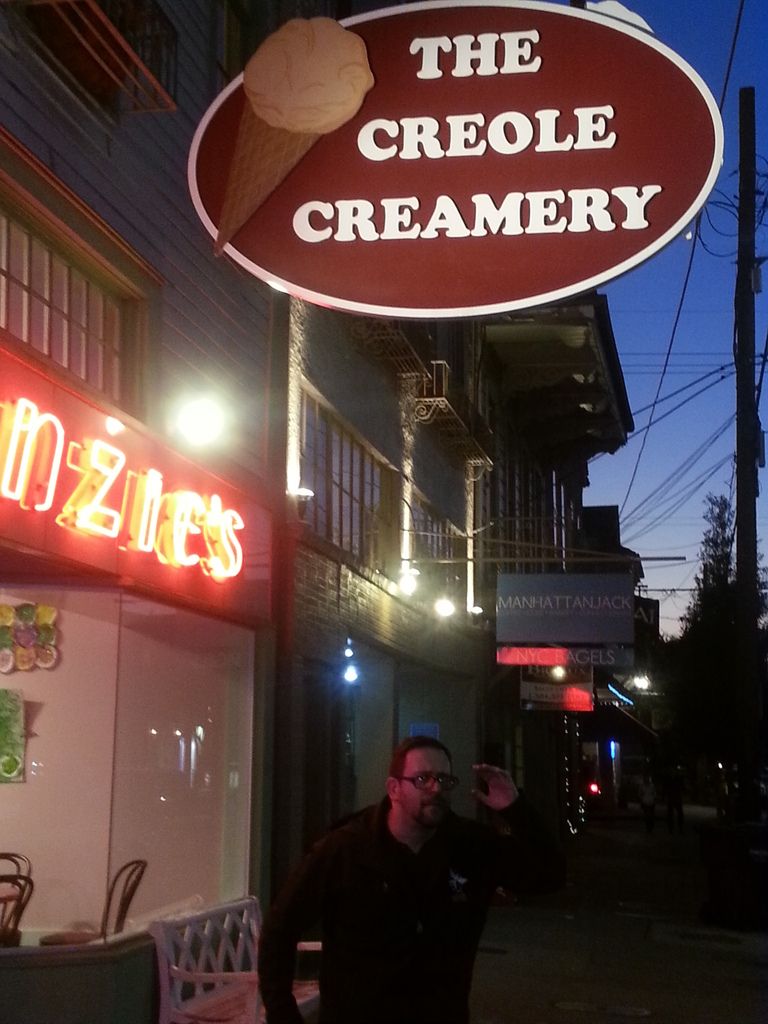 |
| Banshee Season 3 Key Art |
I watch Banshee live as often as I can. I usually livetweet while viewing at 10pm, then immediately watch the rebroadcast Cinemax so thoughtfully schedules at 11pm sans the Twitter distraction to pick up on subtleties that may have escaped me, or just watch a really obese guy become road sausage again because...c'mon, that scene was batshit crazy. One of the things Banshee has done very well is modulation between the batshittery, which is the obvious selling point of the show, and actual, nuanced character work and damn solid acting. Characters in Banshee live in one of two worlds...the stylized action world, and something approaching the real world (as real as it can get in this crazy town, anyway). I've always felt that the characters who lived in this so-called "real" version of Banshee help ground the craziness and make the hyper-intense world of Lucas Hood, Carrie Hopewell, Sugar Bates,Job, Kai Procter, Rebecca Bowman and Chayton Littlestone a place where stakes feel dramatically viable and human-scaled.
 |
| Rus Blackwell as Gordon Hopewell, schooling some punk kids |
In season three, Banshee killed its two most human characters. As someone who came to love Trieste K. Dunn as Siobhan Kelly and Rus Blackwell as Gordon Hopewell, their losses make this a fundamentally different show. Gone is Lucas Hood's promise for something approaching normalcy. Gone is the man whose support allowed Carrie Hopewell to rebuild herself. Because these characters were rarely a part of those aforementioned setpieces, they didn't have as much screen time as others, but Dunn and Blackwell made their scenes count. Siobhan had conquered her personal demons. Gordon had pulled himself out of his vice spiral and assumed the mayorship of the town. I took the Siobhan death particularly hard. Even though Dunn stayed around for a couple of episodes after her character's death to appear in dream sequences and hallucinations, I have to admit that the urgency to rewatch that 11pm rebroadcast was not nearly as strong with my favorite character gone. The deaths of Siobhan and Gordon were handled about as well as they could be, but their import to the show cannot be overstated. Dunn's luminous power and Blackwell's load-bearing authority will be gravely missed.
 |
| What Chayton actually broke was my damn heart. (Geno Segers, Trieste K. Dunn) |
There is a lot to love about season three, though. New characters Billy Raven (Chaske Spencer), Kurt Bunker (Tom Pelphrey), Douglas Stowe (Langley Kirkwood), Robert Phillips (Denis O'Hare), Aimee King (Meaghan Rath) and Emily Lotus (Tanya Clarke) were all dramatically intriguing and added texture to the ensemble, though my newbie MVP was Clarke. Matt Servitto's Brock Lotus is a favorite of mine and clearly the writer's room, and even though he's one of the aforementioned "real world" characters, his facility with a one-liner makes me believe he'll survive for a while. Fleshing him out by introducing us to his ex-wife is a thoughtful way of deepening Brock, and her portrayal as a sympathetic, nurturing counselor whose own personal life is dysfunctional as hell is a nice tightrope for an actor to walk. We also got more burrowing into the pasts of mystery men Burton (Matthew Rauch) and Job (Hoon Lee), while chief villain Kai Proctor flirted with absolution upon the death of his mother, Leah Proctor (Jennifer Griffin) in some of my favorite scenes of the year. The action sequences were again on point, from a highway gun supply hijacking to a brutal two-person duel (Burton and Odette Annable's Nola Longshadow) making full, "every part of the buffalo" use of a Rolls-Royce to an all-night siege at the Banshee police station to an innovatively-filmed military base heist to a Hood/Chayton chase through a surreally empty French Quarter ending in one of the more graphic shotgunnings you could ever hope to see just outside Mardi Gras World (Geno Segers was unquestionably great as Chayton, by the way), Banshee never lost sight of the fact that action scenes work best when you care about the consequences of the barrages, bullets, and bone-breaks. And, of course, the two leading actors of this show, Antony Starr and Ivana Milicevic, continue to murder in the roles of Lucas and Carrie, while Ulrich Thomsen serves up one of the most complex bad men on TV.
 |
| The first table read for Banshee season three, when 1/3 of these characters were still alive. |
If I had to guess, there are going to be two more seasons of Banshee. This production churns story at a rate unlike anything else on television, and at some point most of the characters will be dead or incapacitated, so two more seasons seems about right. I'll be there for every episode, no matter who they kill or how they kill them. That said, there is a dramatically viable version of Banshee in another dimension which ends with newly appointed Sheriff Siobhan Kelly guarding the town against the machinations of ascendant ex-Amish crimelord Rebecca Bowman (Lili Simmons). I know I'd watch the hell out of that show.
Follow me on Twitter @TheOneWhoKnox
 |
| I was in New Orleans the night Hood and Brock went looking for Chayton. All I found was delicious ice cream. |